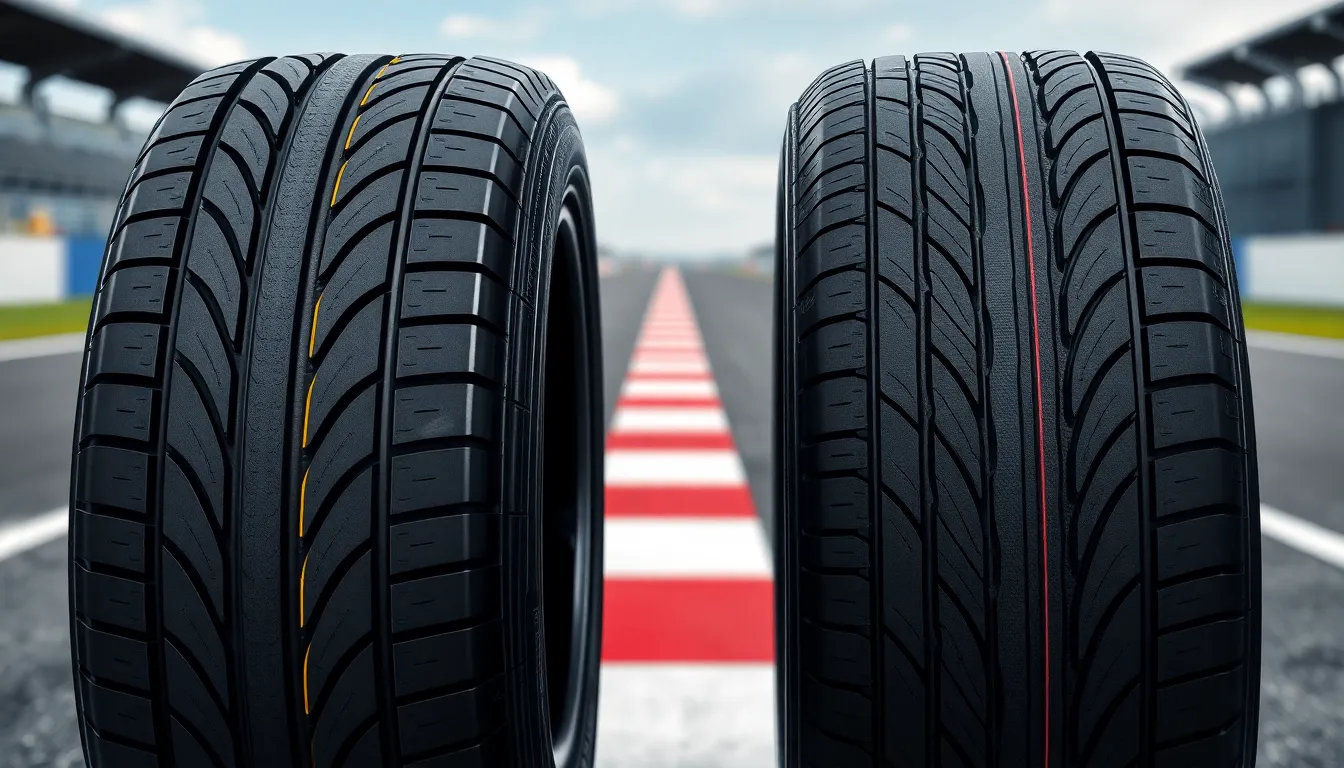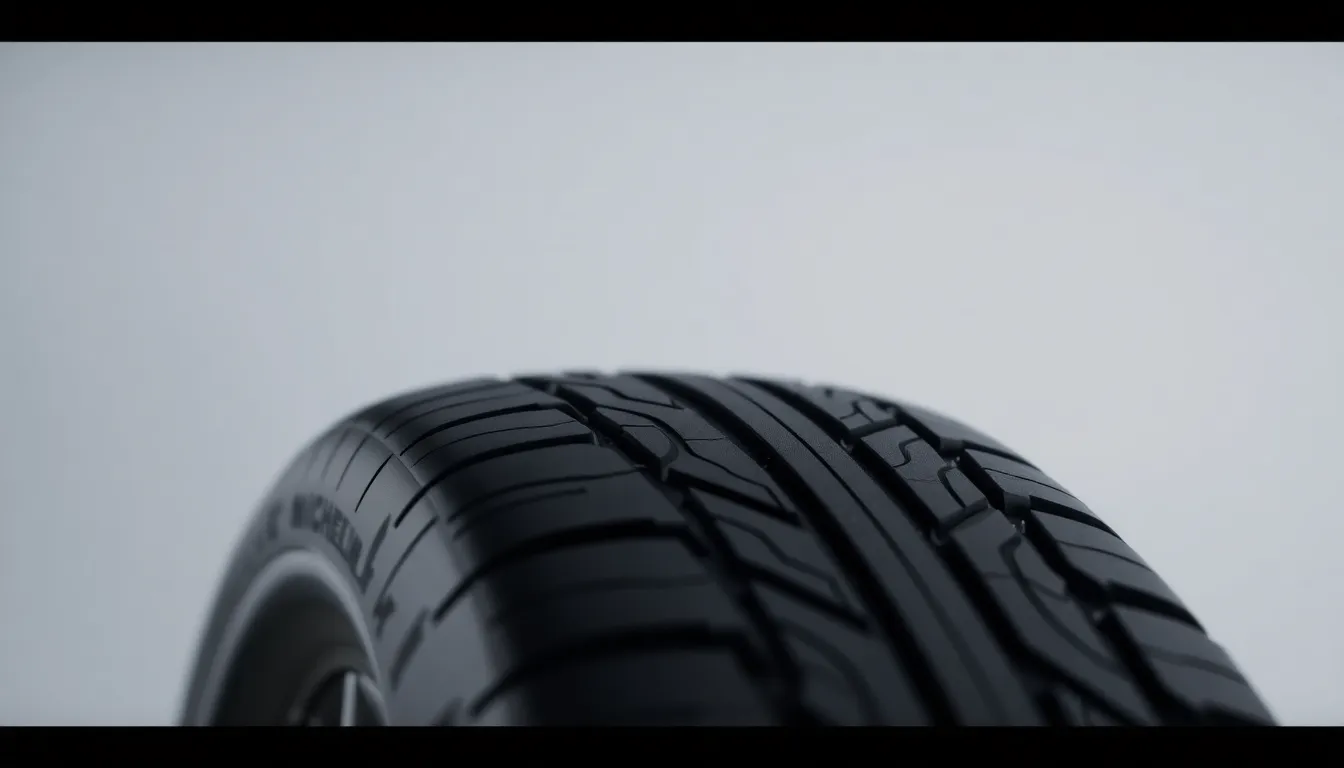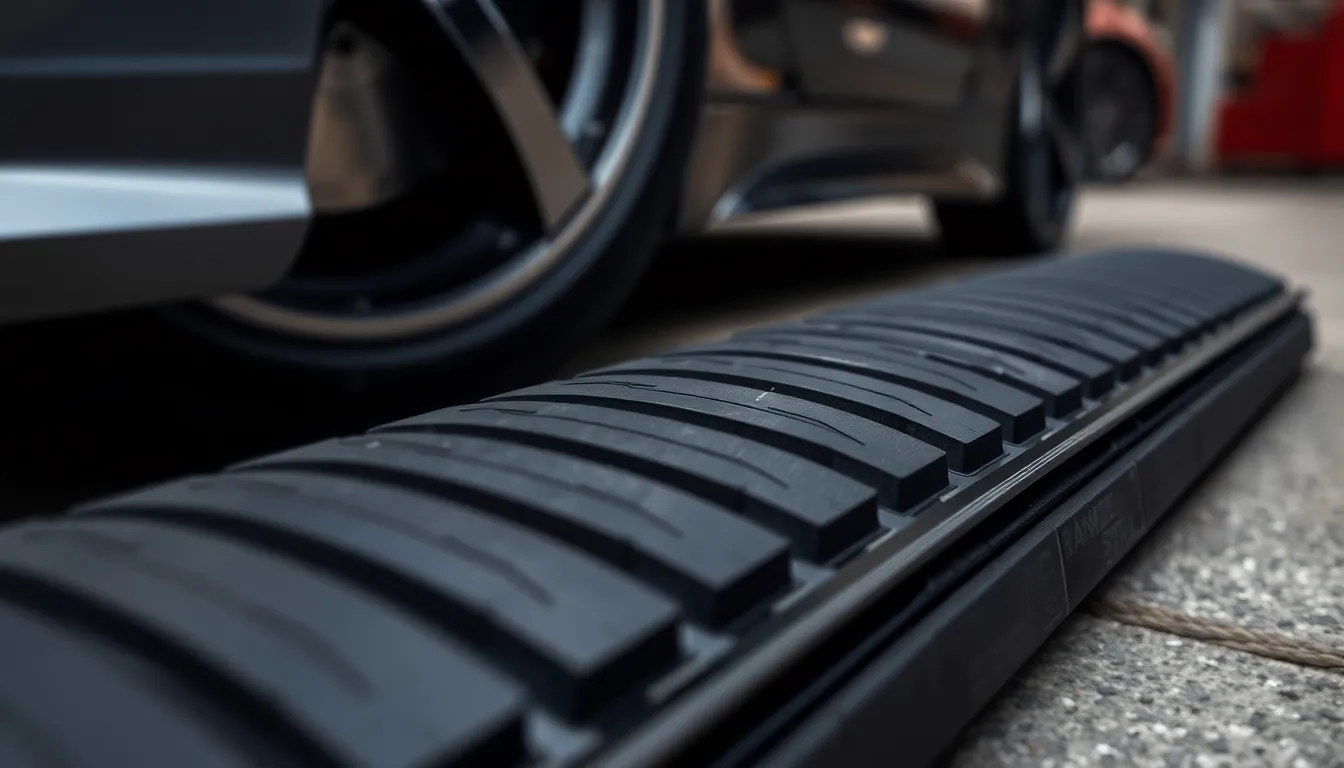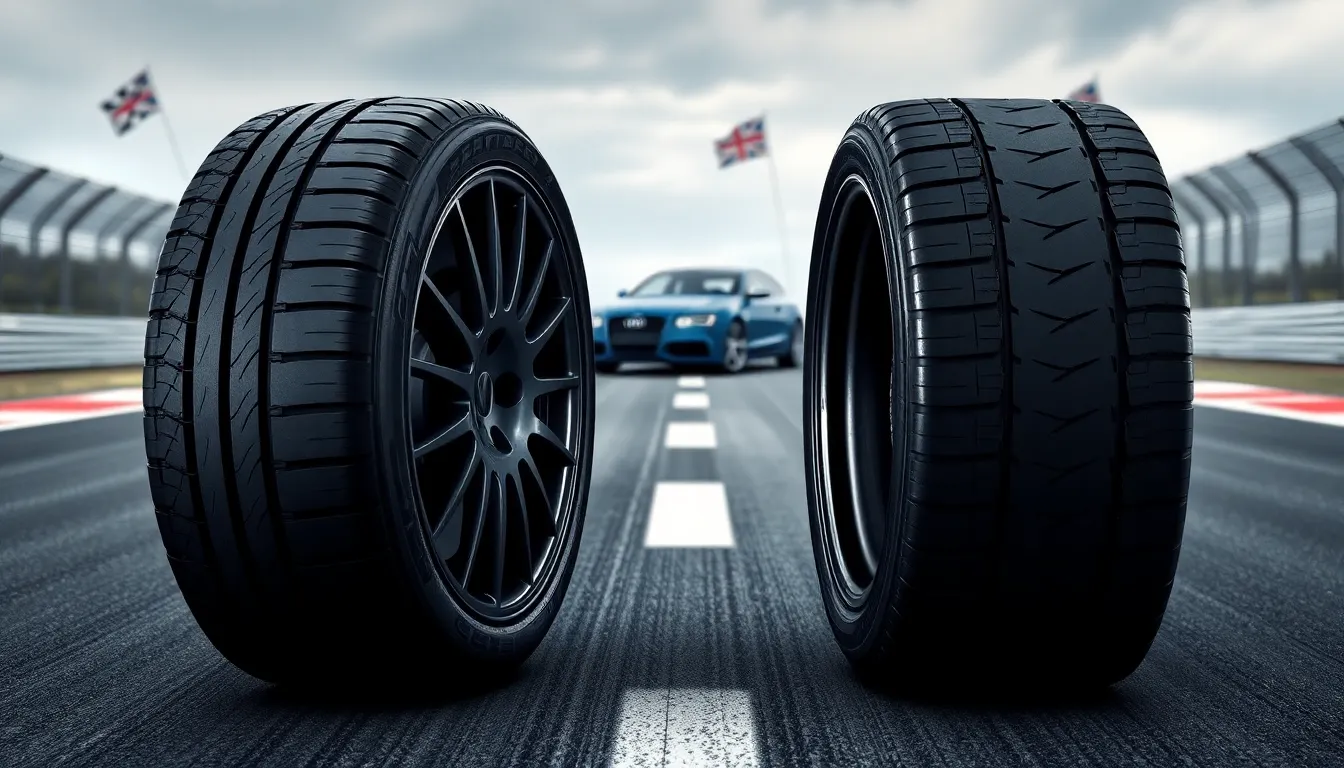When we’re hunting for the ultimate high-performance tire, Michelin’s legendary Pilot series consistently tops our list. Two standout models have captured enthusiasts’ attention: the Pilot Super Sport and the newer Pilot Sport 4S. Both tires promise exceptional grip, precision handling, and track-worthy performance that’ll transform your driving experience.
We’ve tested countless performance tires over the years, and these two Michelin powerhouses represent the pinnacle of street-legal racing technology. The Pilot Super Sport earned its reputation dominating racetracks worldwide, while the Pilot Sport 4S builds on that legacy with cutting-edge innovations.
Choosing between these tire titans isn’t straightforward – each offers distinct advantages that could make or break your driving satisfaction. We’ll break down the key differences in performance, durability, and value to help you make the perfect choice for your high-performance vehicle.
Michelin Pilot Super Sport Overview
The Michelin Pilot Super Sport represents the brand’s flagship ultra-high performance tire that dominated the market for nearly a decade. We recognize this model as the benchmark for track-focused summer tires that deliver exceptional performance across various driving conditions.
Performance Characteristics
The Pilot Super Sport delivers remarkable dry grip through its asymmetric tread design and Variable Contact Patch 3.0 technology. Track testing demonstrates lateral acceleration capabilities exceeding 1.2g on professional circuits. Stopping distances from 60 mph measure consistently under 100 feet on dry pavement.
Cornering precision stands out as the tire’s strongest attribute with minimal sidewall flex during aggressive maneuvers. The compound maintains consistent performance temperatures between 160°F and 220°F during extended track sessions. Wet weather performance remains competent though not exceptional compared to dedicated wet-weather compounds.
Noise levels register at 68-72 decibels at highway speeds depending on road surface texture. Treadwear ratings indicate approximately 15,000-25,000 miles of usable life under normal driving conditions. Track use reduces lifespan significantly to 8,000-12,000 miles depending on driving intensity.
Target Vehicle Applications
Sports cars represent the primary application for Pilot Super Sport tires including Porsche 911 variants, BMW M3/M4 models, and Chevrolet Corvette generations. Performance sedans benefit from the tire’s balanced characteristics including Mercedes-AMG C63, Audi RS4, and Cadillac CTS-V platforms.
Luxury performance vehicles frequently specify these tires as original equipment including Ferrari 458 Italia, McLaren MP4-12C, and Aston Martin V8 Vantage models. Track day enthusiasts favor the Pilot Super Sport for weekend circuit events due to its consistent performance under extreme conditions.
Size availability spans 18-inch through 21-inch diameters with widths ranging from 225mm to 345mm. Popular fitments include 245/35ZR19, 275/30ZR20, and 295/25ZR21 specifications for modern performance applications.
Michelin Pilot Sport 4S Overview

The Michelin Pilot Sport 4S represents an evolution in ultra-high performance tire technology that balances track capability with enhanced wet weather performance. We recognize this tire as Michelin’s answer to drivers demanding exceptional performance across broader driving conditions compared to the track-focused Pilot Super Sport.
Key Features and Technology
Ever-changing Response Technology forms the foundation of the Pilot Sport 4S’s advanced engineering, improving the contact patch for superior handling and stability during aggressive driving maneuvers. Multi-Compound Technology distinguishes this tire through its innovative dual-compound construction, featuring a stiff inner compound optimized for dry handling precision and a silica-based outer compound engineered for enhanced wet grip performance.
Variable Contact Patch 3.0 technology ensures consistent grip during high-speed cornering by maintaining optimal tire contact with the road surface throughout various driving scenarios. Advanced tire compounds integrated throughout the construction deliver improved performance characteristics on both dry and wet road surfaces, addressing the limitations we observed in the Pilot Super Sport’s wet weather capabilities.
Asymmetric tread design maximizes contact area while incorporating specialized groove patterns that efficiently evacuate water for enhanced wet traction. Heat-resistant construction materials enable sustained performance during extended track sessions without compromising structural integrity or grip levels.
Intended Use Cases
Collaboration with major vehicle manufacturers including Audi, BMW, Mercedes-Benz, and Porsche guided the development of the Pilot Sport 4S, making it a versatile choice for various sports vehicles and high-performance applications. Drivers seeking balanced performance between dry track capability and wet weather confidence find the Pilot Sport 4S addresses both requirements effectively.
Sports car enthusiasts operating vehicles in variable weather conditions benefit from the tire’s enhanced wet performance without sacrificing the dry grip characteristics essential for spirited driving. Performance sedan and luxury vehicle owners appreciate the tire’s ability to deliver exceptional handling while maintaining composure during unexpected weather changes.
Track day participants who encounter mixed conditions throughout their driving sessions rely on the Pilot Sport 4S’s consistent performance across temperature ranges and surface conditions. Street driving applications where weather unpredictability demands superior wet traction make this tire particularly suitable for year-round high-performance use.
Head-to-Head Performance Comparison

We’ll examine how these two Michelin performance tires compare across critical driving scenarios. The Pilot Sport 4S demonstrates improvements over the Pilot Super Sport in most performance categories through advanced technology integration.
Dry Weather Performance
Dry handling excellence defines both tire models, though distinct characteristics separate their performance profiles. The Pilot Sport 4S delivers superior all-around grip due to its advanced multi-compound tread design and Ever-changing Response Technology integration. Both tires maintain exceptional lateral acceleration capabilities, yet the Pilot Sport 4S sacrifices minimal initial turn-in sharpness for enhanced comfort and refinement. Cornering precision remains outstanding across both models, with the Pilot Super Sport offering slightly more aggressive initial response. Temperature management during sustained high-performance driving favors the Pilot Sport 4S through its improved heat-resistant compound formulation.
Wet Weather Handling
Wet condition performance showcases the Pilot Sport 4S’s technological advancement over its predecessor. The newer model achieves superior wet braking distances and faster lap times in rainy conditions compared to the Pilot Super Sport. Enhanced water evacuation comes from the Pilot Sport 4S’s optimized tread pattern and silica-based outer compound technology. Hydroplaning resistance improves significantly with the Pilot Sport 4S design, providing greater confidence during sudden weather changes. Grip consistency in varying wet conditions makes the Pilot Sport 4S the more versatile choice for drivers encountering mixed weather scenarios.
Track Performance Capabilities
Track readiness characterizes both tire models, though the Pilot Sport 4S offers enhanced versatility for circuit use. Extended session performance favors the Pilot Sport 4S through its improved longevity and temperature stability during repeated heat cycles. Professional racing applications continue to validate both tire designs, with the Pilot Sport 4S gaining preference for its newer technology integration. Lap time consistency throughout track sessions demonstrates the Pilot Sport 4S’s ability to maintain grip levels longer than the Pilot Super Sport. Performance predictability across varied track surfaces gives the Pilot Sport 4S an edge for drivers seeking reliable feedback during aggressive driving scenarios.
Construction and Technology Differences

We’ve identified important technological advancements that separate these two Michelin tire models beyond their basic performance characteristics. The Pilot Sport 4S incorporates Ever-changing Response Technology that continuously adapts to road conditions for an effortless driving experience, while the Pilot Super Sport relies on more traditional construction methods.
Compound Technology
The Pilot Sport 4S utilizes a multi-compound, hybrid tread compound that delivers outstanding dry and wet grip performance. This advanced formulation combines different rubber compounds strategically placed across the tire’s contact patch. Engineers developed this hybrid approach to optimize grip characteristics for varying road conditions and temperatures.
Grip performance measurements show the Pilot Sport 4S achieving better all-around traction, especially in wet conditions compared to the Pilot Super Sport. The newer compound technology enables the tire to maintain consistent grip levels across a broader range of operating temperatures. Chemical composition differences allow the Pilot Sport 4S to provide enhanced wet weather capabilities without sacrificing dry performance characteristics.
Tread Design and Pattern
The Pilot Sport 4S features an ultra-reactive tread pattern that adapts to road conditions for consistent performance across different driving scenarios. This design approach represents a important evolution from the Pilot Super Sport’s more traditional tread architecture. Pattern elements include specialized groove configurations that enhance water evacuation while maintaining maximum contact area during dry conditions.
Manufacturing processes for the Pilot Sport 4S incorporate newer technology in the contact patch design, resulting in improved steering response and road feedback. The tire also features a distinctive velvet sidewall finish that distinguishes it visually from the Pilot Super Sport. Tread block arrangements optimize the balance between cornering stability and straight-line tracking precision.
Price and Value Analysis

Pricing represents a important factor when choosing between these two premium Michelin offerings. The Pilot Sport 4S commands a higher price point due to its advanced technology and construction methods.
Cost Comparison
The Pilot Super Sport costs less than its successor since Michelin continues phasing out this older model in favor of the Pilot Sport 4S. Pricing for the Pilot Sport 4S starts around $817 depending on tire size and retailer selection. Both tires carry premium market positioning as original equipment on many high-performance vehicles, reflecting their exceptional quality standards.
Advanced materials and construction justify the Pilot Sport 4S’s higher price tag compared to the Super Sport model. Cost differences vary based on tire size availability and current market conditions. The newer 4S technology incorporates improved rubber compounds and enhanced carcass designs that deliver superior comfort and performance levels.
Longevity and Wear Ratings
Multiple reviews and user reports confirm that the Pilot Sport 4S lasts longer than the Pilot Super Sport through improved rubber compounds and optimized tread design. Enhanced wet and dry grip capabilities accompany this increased durability performance. Better NVH reduction and enhanced comfort in the 4S correlate with more even tread wear patterns, potentially extending overall tire life.
The Pilot Super Sport maintains good durability characteristics but wears faster under aggressive driving conditions compared to the 4S model. Advanced compound technology in the newer tire provides better resistance to heat buildup and tread degradation during extended performance sessions.
| Feature | Michelin Pilot Super Sport | Michelin Pilot Sport 4S |
|---|---|---|
| Price | Lower (older model being phased out) | Higher (latest technology and construction) |
| Comfort & Noise | Less comfort, higher road noise | Improved comfort, quieter ride |
| Traction & Handling | Excellent dry and wet grip | Superior overall grip and handling |
| Longevity/Wear | Good, shorter lifespan under hard use | Longer-lasting due to enhanced compounds |
| Technology | Original motorsport-derived construction | Updated compounds, velvet sidewall finish |
Which Tire Should You Choose

Both tires excel in high-performance applications, yet distinct advantages make each model suitable for different driving priorities and usage patterns.
Best Applications for Pilot Super Sport
Track enthusiasts find the Pilot Super Sport delivers exceptional value when prioritizing consistent lap times over extended sessions. The tire maintains steady performance characteristics throughout aggressive cornering sequences, making it ideal for drivers who participate in track days 2-3 times annually while using their vehicle primarily for daily commuting.
Performance sedan owners appreciate the Pilot Super Sport’s durability advantage, as it provides reliable grip for spirited weekend drives without requiring frequent replacements. Sports car drivers who value cost effectiveness often select this model when operating vehicles like BMW M3s, Porsche 911s, or Corvettes in mixed street and occasional track environments.
Long distance touring becomes more economical with the Pilot Super Sport’s extended tread life, particularly for drivers covering 15,000+ miles annually in performance vehicles. The tire’s construction maintains structural integrity across varied temperature ranges, supporting consistent handling characteristics during extended highway driving sessions.
When to Choose Pilot Sport 4S
Wet weather driving demands the superior hydroplaning resistance and shorter braking distances that the Pilot Sport 4S provides through its advanced silica-based compound technology. Drivers in regions experiencing frequent rainfall or unpredictable weather patterns benefit from the enhanced water evacuation capabilities and improved grip on saturated surfaces.
Luxury performance vehicle owners prioritize the Pilot Sport 4S when seeking the latest tire technology integrated directly with manufacturers during vehicle development. The Ever-changing Response Technology adapts to varying road conditions automatically, providing optimal performance without driver intervention across different driving scenarios.
Track focused drivers select the Pilot Sport 4S when planning regular circuit use, as its improved temperature stability and grip longevity support extended aggressive driving sessions. The advanced multi-compound construction maintains consistent performance levels longer than traditional designs, particularly during demanding track conditions where sustained grip matters most.
Conclusion
Both the Pilot Super Sport and Pilot Sport 4S represent Michelin’s commitment to ultra-high performance tire engineering. We’ve seen how each model serves distinct driving needs and preferences.
The Pilot Super Sport remains an excellent choice for track purists and budget-conscious enthusiasts who prioritize proven performance. Meanwhile the Pilot Sport 4S offers superior versatility with its advanced technology and enhanced wet weather capabilities.
Your decision eventually depends on your driving priorities and budget. We recommend the Pilot Sport 4S for most drivers seeking the latest technology and all-weather confidence while the Pilot Super Sport suits those focused purely on dry performance and value.
Frequently Asked Questions
What is the main difference between Michelin Pilot Super Sport and Pilot Sport 4S?
The Pilot Sport 4S features advanced Ever-changing Response Technology and Multi-Compound Technology for better wet weather performance, while the Pilot Super Sport uses traditional construction with superior dry track performance. The 4S offers more balanced all-weather capabilities, whereas the Super Sport excels primarily in dry conditions.
Which tire performs better in wet weather conditions?
The Michelin Pilot Sport 4S significantly outperforms the Pilot Super Sport in wet conditions. It offers shorter braking distances, better hydroplaning resistance, and superior wet grip thanks to its silica-based outer compound and optimized tread design for water evacuation.
Are these tires suitable for track use?
Yes, both tires excel on the track. The Pilot Super Sport achieves lateral acceleration exceeding 1.2g with minimal sidewall flex. The Pilot Sport 4S offers improved temperature stability and longevity during extended track sessions, maintaining grip levels longer than the Super Sport.
Which tire offers better value for money?
The Pilot Sport 4S offers better long-term value despite higher upfront costs (starting around $817). It lasts longer than the Pilot Super Sport due to improved rubber compounds and optimized tread design, while also providing enhanced comfort and reduced noise levels.
What vehicles are these tires designed for?
Both tires target sports cars, luxury performance vehicles, and performance sedans. They’re available in sizes ranging from 18-inch to 21-inch diameters and are developed in collaboration with major vehicle manufacturers for optimal compatibility with high-performance applications.
Which tire should I choose for daily driving?
For daily driving with mixed weather conditions, choose the Pilot Sport 4S. It offers superior wet weather performance, better comfort, and enhanced all-around capabilities. The Pilot Super Sport is better suited for track enthusiasts who prioritize maximum dry performance over versatility.





